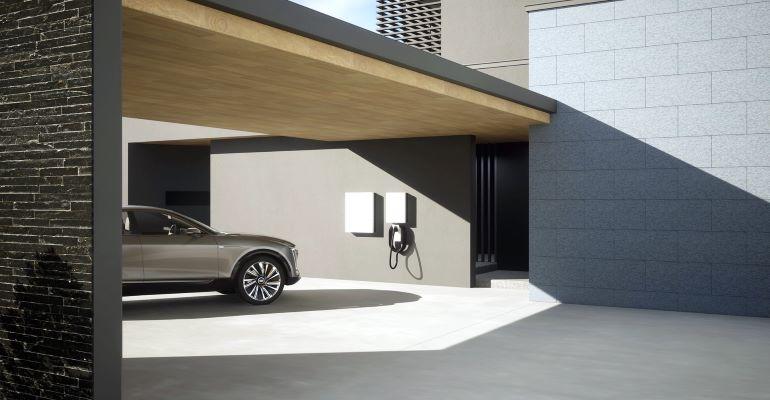General Motors is expanding its bidirectional charging technology and availability to all its Ultium-based battery-electric vehicles by 2026.
The automaker’s first bidirectional-capable vehicle is the ’24 Chevrolet Silverado EV RST pickup, followed by the ’24 GMC Sierra EV Denali. The rollout will continue with the ’24 Chevy Blazer BEV, ’24 Cadillac Lyriq and the upcoming Escalade IQ.
Bidirectional charging allows a BEV to send energy from its battery pack to various recipients, but the most common current applications involve returning energy to the grid (known as vehicle-to-grid or V2G) or sending it to your home, business, appliances, an RV or another vehicle (V2V).
Not every BEV has the capability, but OEMs are ramping up bidirectional charging to create an additional selling point for consumers. Ford, for example, has been aggressively touting the ability of the Ford Lightning (as well as its internal-combustion-engine F-150 equipped with “Ford Intelligent Backup Power”) to provide power at job sites, as well as power homes during blackouts.
Tesla, the market leader in BEVs, has not provided bidirectional charging capability, but recently announced all its vehicles will support bidirectional charging by 2025. The automaker will update existing vehicles in owners’ hands via over-the-air software updates.
Hyundai’s BEVs support bidirectional charging as do Nissan’s. The Hyundai Ioniq 6, for example, is equipped with a power outlet between the rear seats, and you can also power your devices through the vehicle’s exterior charge port using a special adapter.
The benefits of bidirectional charging are two-fold. Besides providing BEV owners a backup power source (in lieu of a whole house generator) for their homes and small businesses during blackouts, they can reduce the cost of home or business energy consumption by sending power back to the grid via utility companies that support bidirectional charging and incentivize its use.
GM Energy recently unveiled its “Ultium Home” product offerings that will allow customers to participate in sending power back to the grid.
“As GM Energy’s ecosystem of connected products and services continues to expand, we’re excited to provide customers with options for greater energy management beyond the vehicle,” says Wade Sheffer, vice president-GM Energy. “Our initial Ultium Home offerings represent an opportunity for customers to take greater control over their personal energy independence and resiliency.”
Since last year, GM has been testing a program with San Francisco-based Pacific Gas and Electric. The Northern California utility has pressed GM BEVs into service as on-demand power sources in a pilot program for homes serviced by the utility company.
“Imagine a future where everyone is driving an electric vehicle – and where that (BEV) serves as a backup power option at home and more broadly as a resource for the grid,” says Patti Poppe, CEO of PG&E. “Not only is this a huge advancement for electric reliability and climate resiliency, it’s yet another advantage of clean-powered (BEVs), which are so important in our collective battle against climate change.”
How will consumers benefit in the future as more utility companies adopt bidirectional energy flow? BEV owners can charge their vehicles overnight when energy is cheapest and have energy flow back to the grid during the day when power usage is at its peak – provided the owner’s vehicle is idle.
While Ford has many examples of Lightning and F-150 owners powering appliances by plugging extension cords into the AC outlets in the trucks, supporting bidirectional power for a home requires some effort and investment by the BEV owner.
To use the Ford Lightning as a whole-house backup power source by sending power from the vehicle’s pack to an electrical box or grid, owners need to select the optional feature Intelligent Backup Power, which is used in conjunction with Ford’s Charge Station Pro. The home also must be professionally prepared to interface with an F-150 Lightning. Once work is completed by an electrician, owners can use the F-150 Lightning as a main power source for their home during a blackout. The same set up is required for other BEVs, including GM’s.
Using a BEV for backup power, in lieu of installing a whole-house generator – which runs around $5,000 – and the ability as time goes on to get energy credits for sending electricity back to the grid, can be part of a compelling case for BEV fence-sitters.





